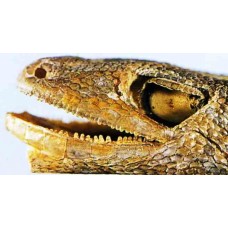Shopping Cart
0 item(s) - $0.00Article | FYI Amazing and Interesting Facts | What are Precious Ingredients? | By Thomas Richard Joiner | 什么是珍贵成分

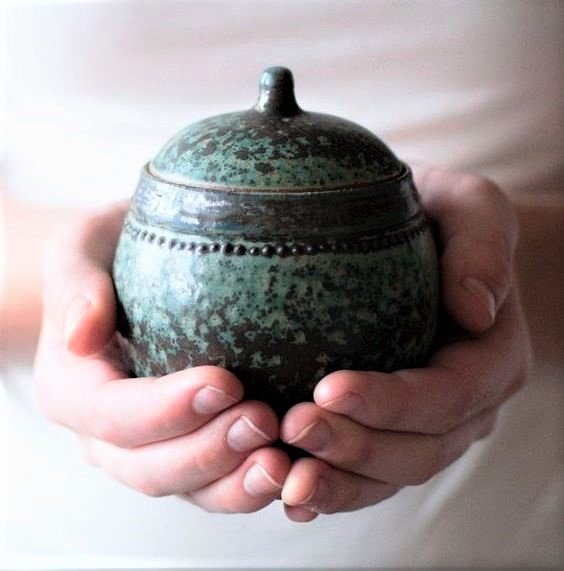
What are Precious Ingredients?
Written by
Thomas Richard Joiner ©
Due to changes in the number of herbs found in the Chinese Pharmacopeia, that is a result of the extinction of certain plants and animal species, the discovery of previously unknown plants, and a lack of documentation, etc., there has always been controversy over exactly how many herbs make-up the traditional Chinese Herbal System. Despite the on-going controversy, there is general agreement among those who study the 5,000-year-old Asian Healing Art that the traditional Chinese Herbal System can be broken-down (or classified) into two distinct groups or categories. The first group contains a select group of herbs—that due to deforestation, endangerment of the species, crop failures, etc.—are rare, often in short supply, and are valued beyond material quality. The adoration for these powerful ingredients not only puts them in a class above the rest of the herbs that make-up the system, it has also created a certain mystique surrounding them that can make it difficult to separate fact from fiction. Many of these exotic substances are major ingredients in some of Taoism’s most prized sexual enhancement and longevity prescriptions. They are also, I might add, arguably the most powerful and sought after ingredients in the entire Chinese Herbal Pharmacopeia.
Throughout the ancient Chinese Herbal System’s illustrious history, it has always held this particular group of ingredients in the highest regard, and classifies them in a category above so-called “common herbs,” because of the difficulty in obtaining them, and more importantly due to their extraordinarily powerful effects. The legendary reputation—that these priceless substances have earned based on their power and effectiveness—has been discussed in most major Materia Medica, are the subject of folklore, as well as being written about in the Chinese medical classics. Over the course of history because of their scarcity, they have often been considered more-precious-than-gold, and in some cases wars have been fought in an effort to procure them. It is for good reason that they are considered “Precious Ingredients.”
For the purpose of this article I will focus my discussion on the following six ingredients that are representative of this category, a majority of these ingredients are zoological, some are botanical and a few are insects. Due to increased public concern over environmental issues and animal cruelty, heading the list is arguably the most maligned ingredient in the entire Chinese Herbal System:
- Hu Gu (tiger’s bone)
- Xi Jiao (rhinoceros horn)
- Lu Rong (deer’s horn)
- Hai Ma (seahorse)
- Ren Shen (ginseng)
- Dong Chong Xia Cao (caterpillar fungus)
Hu Gu—Also known as “tiger’s bone”
While some of the animal parts used in Chinese Herbology are harvested without injuring the animal, the medicinal use of other zoological ingredients such as tiger bone—which is considered one of the most effective substances in Eastern or Western Herbology for strengthening bones and improving arthritic conditions—has resulted in widespread killing of the animal and the subsequent endangerment of the species.In spite of the ongoing controversy, and its illegal status, tiger’s bone as well as other parts of the animal can still be purchased on the Black Market under the counter in some Chinatown herb shops mainly on the East and West coasts of the United States, Hong Kong, and a few African and Asian countries. Although this important ingredient is no longer used by a majority of Chinese herbalists—who consider the use of tiger bone a violation of their basic sense of humanity—there are a few herbalists who continue to use this extraordinary bone strengthening ingredient in spite of the fact that not only does it show a total lack of reverence for life, it also brings into question both ethical and legal issues.
Xi Jiao—Also known as “rhinoceros horn”
Like its cohort tiger bone, Xi Jiao is also an endangered species listed on the Convention on International Trade in Endangered Species of Wild Fauna and Flora (CITES). Trade in Xi Jiao is illegal and strictly prohibited. Rhinoceros horn’s therapeutic actions include cooling the blood and effectively stopping bleeding. It also eliminates toxins and reduces fever and is used to prevent convulsions, seizures and epilepsy. Although they are lacking in potency compared to Xi Jiao and require an increase in dosage of up to ten times the normal dosage, Shui Nui Jiao (water buffalo horn) and Huang Nui Jiao (cow’s horn) are often used as substitutes.
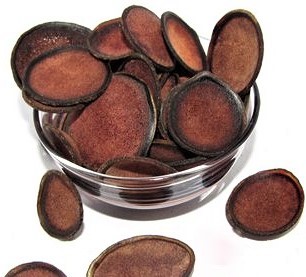 Lu Rong—Also known as “deer’s horn”
Lu Rong—Also known as “deer’s horn”
Fortunately, there are some precious ingredients that don’t require resorting to such gruesome measures in order to harvest the animals’ parts for medicinal use. Herbs like Lu Rong which is highly prized for its ability to nourish the blood and promote production of red blood cells and the male hormone testosterone is an example. Since deer antler’s potent sexual enhancing powers were first discovered centuries ago, it has been used extensively in traditional Chinese Herbology to treat sexual dysfunction such as impotence, spermatorrhea, and nocturnal emissions. Although to a far lesser extent it is also used to strengthen sinews and bones. Sliced deer’s antler is often a main ingredient that is used in “sex tonics” that are considered supreme elixirs in Taoist Sexology. Most of China’s supply of velvet antler comes from Sika or Red deer that are harvested at its maximum growth stage without injuring the animal during the month of June in Northern China, and in December in the South. This is when most savvy consumers consider the best time to purchase it, as deer antler that contains trace elements of the animal’s blood is the most potent and is considered of the highest quality.
Hai Ma—Also known as “seahorse”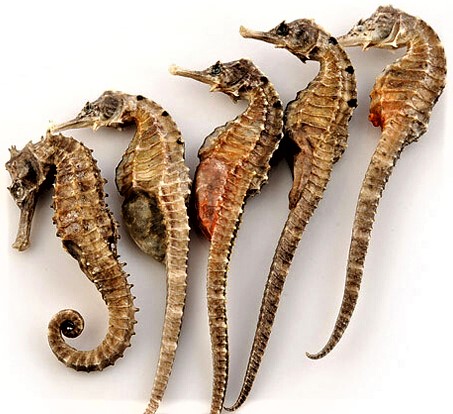
Another ingredient in this distinguished group is the delicate sea creature Hai Ma. Seahorse is highly valued for its ability to invigorate the blood, improve circulation, and dissolve abdominal masses.Due to the herb’s stimulating effect on the reproductive organs it is often used to treat impotence and urinary incontinence. The improved circulation to the lower extremities that is attributed to its use is said to prolong erection of the penis, and it is considered a remedy for erectile dysfunction, which explains why it is so coveted by those who engage in Taoist Sexual Practices. Hai Ma is also well known for its androgenic effect on the prostate gland and testes.Although it is considered a safe herb that can be used by both sexes to improve circulation to the genital area, caution is advised when it is used by pregnant women.In recent years the dwindling supply of seahorse has driven up the price, which has prompted savvy consumers to use a cheaper substitute, Hai Long (pipe fish) which has similar but less potent therapeutic actions.
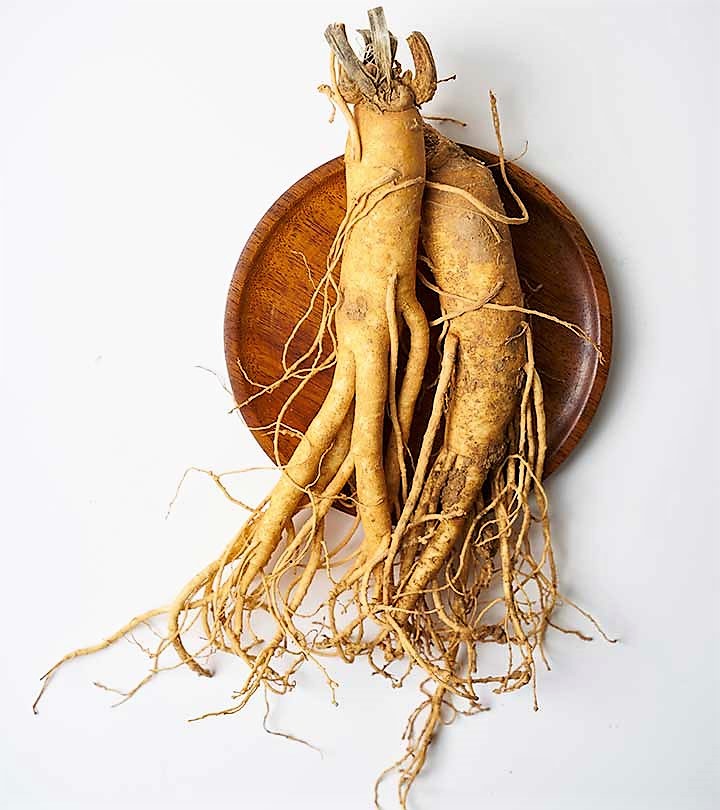
Ren Shen—Also known as “ginseng”
The next herb in this group Ren Shen has the dubious distinction of being the most famous herb in the entire Chinese Herbal System. Since it was first introduced to the Western world by Jesuit priests in the late seventeenth century Ren Shen has been tried by countless numbers of people in at least one of its many different forms (teas, tinctures, pills). Unfortunately, misinformation about dosage, the length of time it should be taken, and, perhaps most importantly, inexperience in choosing high-quality ginseng roots has resulted in widespread improper use of this legendary herb (in the Western world). Consequently, most users have not truly experienced ginseng’s powerful tonifying effects and assume that its reputation is unfounded. Let me assure you that ginseng’s power should not be underestimated! Of all the herbal plant medicines ginseng is unquestionably the most powerful, for effectively nourishing the body’s vital energy (Chi), increasing strength, and extending endurance. Mature high quality roots are considered precious ingredients that are much sought after by so-called ginseng connoisseurs. The legendary Chi enhancing plant whose effects have been described as surreal comes in two forms, cultivated and that which grows naturally outdoors (wild). Although cultivated roots can be powerful, ginseng that is grown “wild” is the highest representation of this remarkable plant species and is the most prized. An important point that needs to be mentioned for anyone who is searching for that ultimate ginseng experience—is that savvy consumers consider the ginseng used in manufacturing pills, tinctures, and teas of inferior quality (basically a waste of money), and only use high quality whole ginseng roots in the raw form. Korean Heaven’s Grade is considered the best. Chinese Shiu Chu ginseng can be good, but generally speaking it is not as potent as its Korean counterpart.
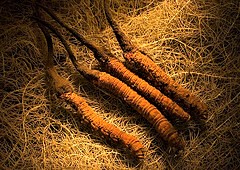
Dong ChongXia Cao—Also known as “caterpillar fungus”
The only insect in this group of Precious Ingredients is caterpillar fungus, which has a broad spectrum of therapeutic applications. “Chong Cao” as it is often referred to in Chinese medicine, is occasionally used to treat respiratory disorders such as consumptive cough when there is phlegm and blood streaked sputum. But the Chinese caterpillar’s main function is treating general weakness, and febrile conditions such as frequent urination, nocturnal emissions, impotence, pre-mature ejaculation, and poor memory. Dong Chong Xia Cao has been shown to increase sperm count and mobility and delay the symptoms of aging. Patients with a variety of sexual disorders have been treated with a high rate of effectiveness. There are two types of caterpillar fungus, that which is cultivated, and that produced normally (grown wild) in nature. The cultivated herb is widely used today primarily because of its lower price compared to the wild-crafted version, which is available but can be prohibitively expensive. Consumers should avoid manufactured powders, capsules and pills, and only use insects that are whole and intact. Scraps and/or broken-pieces are usually an indication of poor quality.
In Closing
Due to the priceyness of these ingredients, fraud, deception and misrepresentation as far as quality are a legitimate concern; therefore, consumers should be mindful of the caveat buyer-beware! My advice would be to only purchase these precious ingredients from reputable sources that you trust. At the risk of repeating myself—I should mention again that if you’re seriously interested in experiencing first-hand the incredible effects that the precious ingredients I’ve discussed are capable of providing—the most important considerations are the specimen’s freshness, and that it is of the highest quality. Regrettably, it is extremely unlikely that you will ever experience the “wow factor” using cheap substitutes and mediocre quality ingredients. As the old saying goes, “you get what you pay for.” This discussion on the use of precious ingredient’s in Chinese Herbal Medicine is for educational purposes only and should not be interpreted as condoning illegal use of any endangered species.
Chién,
Thomas Richard Joiner, Kyoshi
Chinese Goju Martial Arts
Copyright © 2017 by Thomas Richard Joiner
About the Author

Thomas Richard Joiner, author of the Warrior as Healer, Blending Botany and Budo, and Chinese Herbal Medicine Made Easy, Kung Fu Medicine, Martial Esoterica, and Slaying the Dragon is a Kyoshi sixth-degree black belt in Chinese Goju Martial Arts and has received certification in Tien Tao Chi Kung, as well as being a graduate of the Institute of Traditional Chinese Medicine New York City. He has conducted advanced study in traditional Chinese medicine and acupuncture at the Academy of Chinese Culture and Health Sciences in Oakland, CA, trained in Chinese Herbology under Dr. Lai Fu Cai as well as studying at the Institute of Chinese Herbology in Berkeley, CA. Thomas’s martial arts education includes training in Wing Chun Gung Fu with Sifu Ralph Rodriquez, Sifu Lee Moy Shan and the late Grandmaster Moy Yat. In addition he has studied Taoist Esoteric Yoga Micro-cosmic orbit meditation, Iron shirt Chi Kung and Seminal Ovarian Kung Fu with Mantak Chia, as well as training in Chinese Goju Martial Arts under Grandmaster/Shidoshi Ron Van Clief. Sensei Joiner’s books provide extensive insights into the centuries-old practice of incorporating herbs into your martial arts training as well as making available prescriptions for many of the legendary and most highly regarded formulas used in Asian Martial Arts for treating injuries as well as enhancing one’s training. Sensei Joiner has been a practicing Chinese Herbalist for nearly two decades, and is the founder of an online mail order company Treasures From the Sea of Chi which specializes in traditional Chinese herbal formulas used in martial arts training. If you would like more information on herbal practices in the martial arts, Sensei Joiner can be reached at his company email: info@seaofchi.com.
Article | FYI Amazing and Interesting Facts | What are Precious Ingredients? | By Thomas Richard Joiner—Product: Published Article, 3 pages
Write a review
Your Name:Your Review: Note: HTML is not translated!
Rating: Bad Good
Enter the code in the box below:

All Rights Reserved | © Sea of Chi 2026 | Web Design Company - DreamCo Design
The statements made have not been evaluated by FDA. Our products are not intended to diagnose, treat, cure or prevent any disease.



